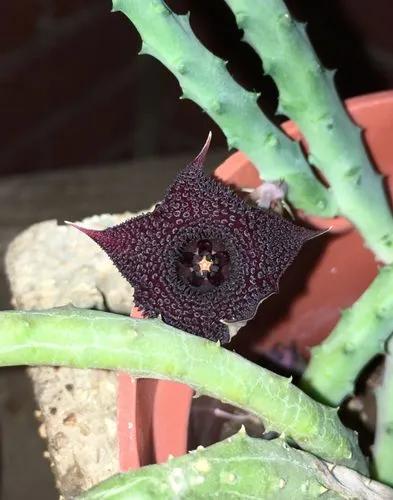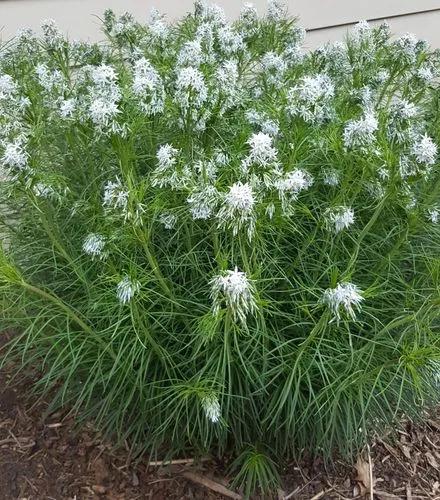Rhipsalis is a genus of epiphytic flowering plants in the cactus family, typically known as mistletoe cacti. They are found in parts of Central America, the Caribbean and northern regions of South America. They also inhabit isolated locations in Africa and Asia, and are the only cactus group naturally occurring in the Old World. This is the largest and most widely distributed genus of epiphytic cacti (those which live on other plants without damaging them). The morphology of Rhipsalis is very variable. The plants can grow mostly pendent, few grow more or less upright or sprawling. There are three main stem shapes: terete, angular and flattened. The stems are succulent, but the degree of succulence varies between the species. Some have very thick stems, whereas other have very thin, filiform stems (e.g. Rhipsalis baccifera, Rhipsalis clavata). In the majority of species, spines are missing or occur only in the juvenile stage (this is most prominent in Rhipsalis dissimilis). Rhipsalis pilocarpa has stems and fruits densely covered by bristes, making this species easily distinguishable from all other Rhipsalis. The flowers are borne lateral or apical and are actinomorphic with a varying number of perianth segments, stamens and carpels. They are small, usually about 1 cm in diameter, white or whitish in most species. Yellowish flowers occur in R. dissimilis and R. elliptica and R. hoelleri is the only Rhipsalis species with red flowers. The fruits are always berries, they are whitish or coloured pink, red or yellow. Vivipary has been observed in R. micrantha and R. baccifera.
Mistletoe Cactus Care
Rhipsalis Pachyptera



How to Care for the Plant

Water

Keep these plants moist, but do not allow them to sit in standing water. Falling leaves can signify that the plant is overwatered.

Fertilizer

Feed regularly with a balanced, diluted fertilizer like a 20-20-20 for best results and up their feeding if blooms are insufficient. Feeding every two weeks is a normal routine.

Sunlight

Rhipsalis are plants that are native to the understory level beneath towering jungle trees. Thus, they require plenty of bright filtered light, but should not burn in the bright direct light of midday or afternoon sun.

Soil

A typical cactus potting mix should be fine for a Rhipsalis cactus, ideally one that contains some organic material. They can also do well with a standard potting mix blended with even parts of sand.

Temperature

These plants like warm tropical temperatures above 50 degrees Fahrenheit. Rhipsalis plants are not tolerant of frost, and they like considerably more humidity than the typical desert cactus.

Container

Rhipsalis cacti are best planted using a standard cactus cutting mix, preferably with some extra organic material, such as peat moss, mixed in.

Popularity

51 people already have this plant 15 people have added this plant to their wishlists
Discover more plants with the list below
Related articles






